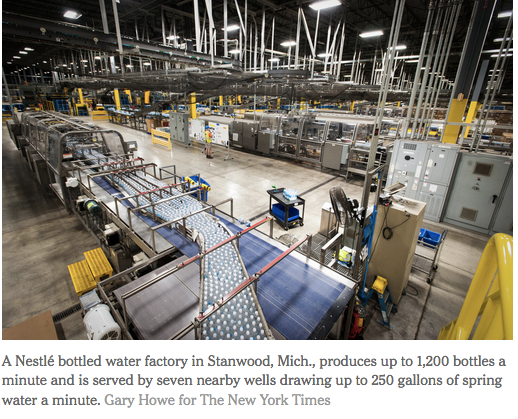EVART, Mich. — The creek behind Maryann Borden’s house was once “a lovely little stream that just babbled along and never changed for decades,” she says. Now it is perhaps 12 feet across — half what it was, she reckons — with grassy islands impeding what used to be an uninterrupted flow.
“What happened?” Ms. Borden asked. “Nestlé happened. That’s what I think.” A lot of her neighbors think so, too.
Nestlé can pump more than 130 million gallons of water a year from a well near this northwestern Michigan town to bottle and sell. It’s a big business: Last year, for the first time, bottled water outsold carbonated soft drinks in the United States.
And now Nestlé wants more. It has applied to increase its pumping allowance at the well by 60 percent. The application, which the Michigan Department of Environmental Quality is expected to rule on within months, has catalyzed opposition in part because of what Nestlé pays for most of the water it bottles: nothing. That is, it pays only a $200 annual permit fee to pump from wells it owns (like this one) or leases.
. . .
In these parts, though, longtime residents like Ms. Borden say common sense might be a better guide than science.
“The math doesn’t add up,” she said, staring at the creek she has lived beside since Dwight D. Eisenhower was president. “I can’t understand how they can take so much. How does it recover from that massive removal? It’s millions of gallons. It doesn’t go back into our aquifer, because they’re putting it in a bottle and shipping it somewhere else.”




